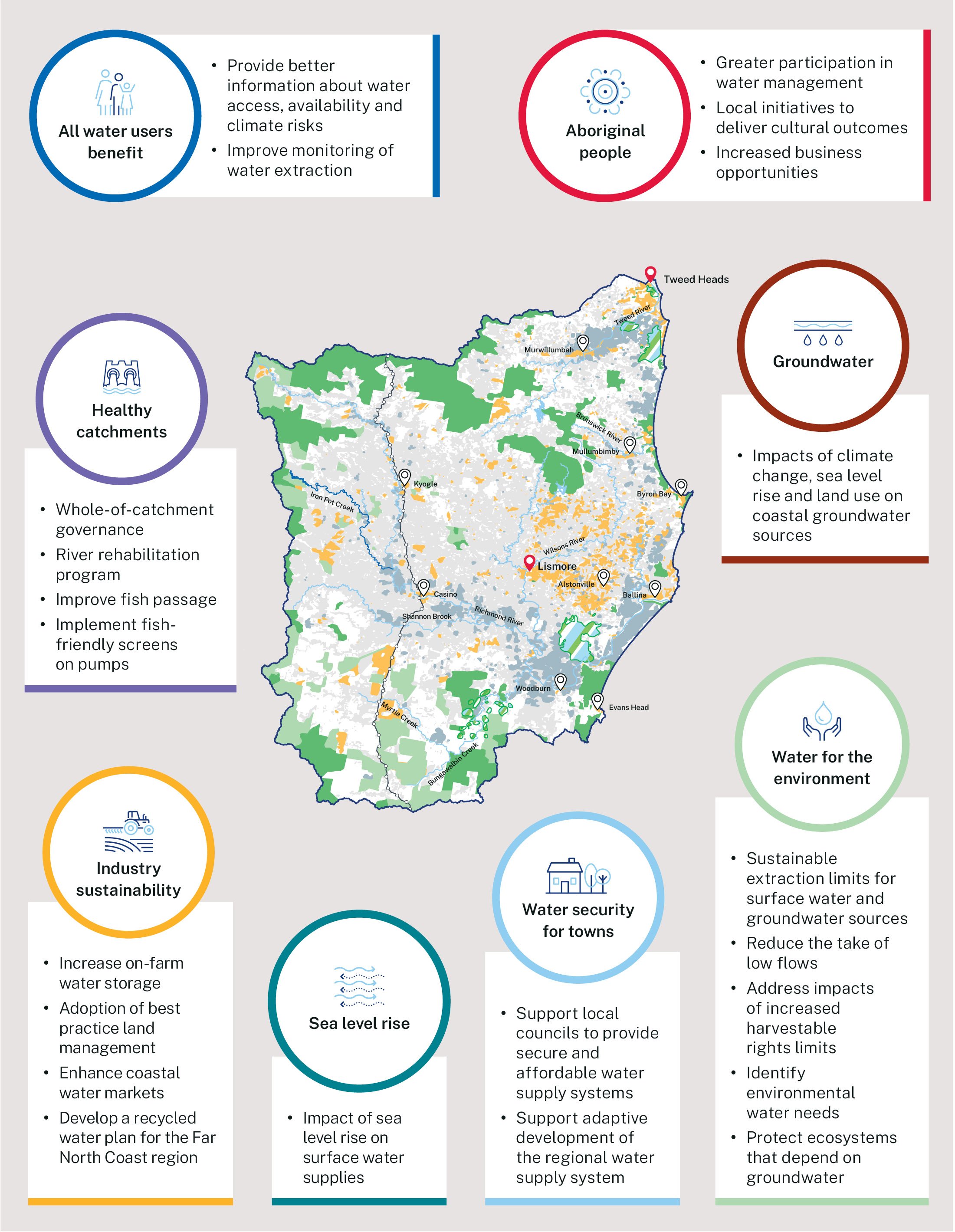Our thoughts on the Far North Coast Water Strategy
One of the guiding documents for the state government for the next two decades was recently released, which grapples with the future issues facing our most precious resource: water. As the strategy outlines:
"We need to prepare our regions for the future now. Regional water strategies do this by bringing together the best and latest climate evidence with a wide range of tools and solutions to plan and manage the water needs of regional NSW over the next 20 years"
Sounds good, right? The problem is that the recently released strategy remains vague – particularly when it comes to restoring river health – and doesn't commit to any specific goals, funding targets, timelines or anything else for that matter. It does a great job highlighting many of the actions that need to be taken, which anyone working in the field already knows, but provides no vision or pathway for how to realistically achieve those objectives.
Let's take one example:
Priority 1 of the water strategy suggests the NSW Government takes a 'Holistic approach to land and water management'. Further examination of priority 1 in the implementation plan incorporates five actions including Action 1.4: 'Deliver a river rehabilitation program.'
Wonderful – we could use one of them! But as you'll see below the strategic position of our state government remains eternally vague and fails to commit to any actions that could be reviewed and considered a success or failure.
Then, if we dig a little deeper, we find certain actions within the implementation plan that completely contradict others. Under priority 3 which should apparently 'Ensure water resource development and use is sustainable and equitable' Action 3.6 acknowledges that 'harvestable rights limits for farm dams in coastal-draining catchments were increased from 10% to 30% in May 2022.'
The reality is that while this report looks great and uses some nice words it provides no strategy for how to improve the health of our rivers. If it wanted to support 'Whole of Catchment Governance' as it states in priority 1.3 then why don't we have Catchment Management Authorities anymore?
While it might seem like we're just bashing the state government cause they're an easy target, the crux of this problem is more important. It's about accountability. As the lead policy maker on land and water management, the organisation with the greatest amount of available funding, and that which ultimately holds the potential to implement the most significant multi-level changes, its frustrating to see taxpayer dollars spent to develop long-term strategies that skirt around the tricky questions and leave those who work within the sector uninspired (yet unsurprised) about the future. State government action to rehabilitate and revive our greatest cultural, social and recreational assets – living entities that ultimately can't be bought back once they're dead – has been lacklustre for years. Our hope that this strategy might be brave in its objectives and specific in its targets has failed to materialise, particularly in an era where climate change and biodiversity loss pose a direct threat to human health & wellbeing.
So where to from here? Community action through local Landcare organisations, First Nations ranger programs, private landholders, local government initiatives, and other community-based organisations has seen significant progress in rehabilitating rivers – much of it through riparian regeneration and restoration. Bit by bit, metre by metre, neglected reaches of our rivers are slowly being healed. But without real and tangible government action and innovative policy that place the health of the environment and its ecosystems at its heart, we are destined to continue making the same mistakes that got us to where we are now.
As Bundjalung man Oliver Costello says: "water always tells the truth."
It's speaking its truth right now. We can choose to ignore that at our own peril.
You can read the whole Far North Coast Water Strategy here.


